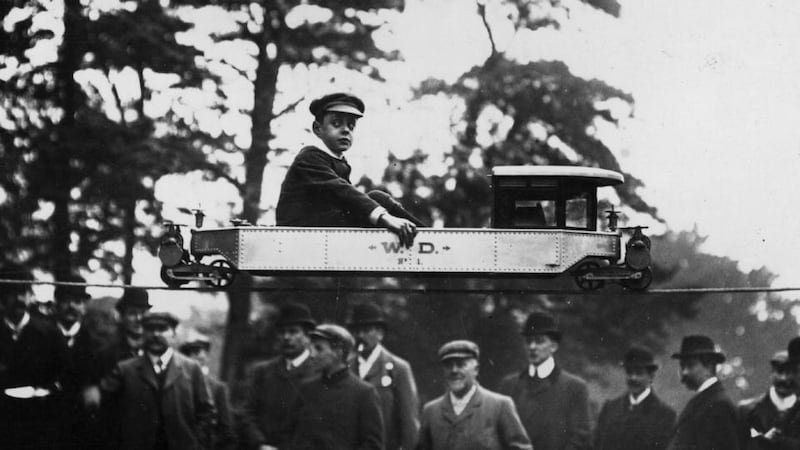On Tuesday, in his birthplace of Castlebar, Co Mayo, a plaque will be unveiled to Louis Brennan, an Irish-Australian mechanical engineer and the inventor of the world's first practical guided missile and the gyroscopic monorail.
Were you to take a peek into Brennan’s garden as it looked in 1907, you would see a model locomotive whizzing through the air balanced upon a solitary wire as if it were a tightrope walker, then leaning into curves like a motorcyclist. It swooped over lily ponds, thundered down earthen slopes and, just as it seemed certain to plunge into a brick wall, it turned sharply and started the journey all over again.
This was the prototype of Brennan's Gyroscopic Monorail. When Winston Churchill came to view it, he remarked, "Sir, your invention promises to revolutionise the railway systems of the world".

Over the next three years, Churchill did his utmost to ensure Brennan’s invention would become the must-have transport system of the 20th century. He did not succeed, but nonetheless, Brennan must surely be Ireland’s most remarkable inventor.
He was born on Main Street in Castlebar on January 28th, 1852, the 10th child of Thomas Brennan and his wife, Honor. Shortly after his ninth birthday, Louis accompanied his parents and some siblings to a new life in Melbourne.
His inventive streak first became apparent at an exhibition in Melbourne in 1873, when the 21-year-old dazzled crowds with a window safety latch, a mincing machine and a billiard marker.
One afternoon, while toying with a cotton reel, it occurred to him that when he pulled the thread from underneath, the reel moved away. The faster he pulled it, the quicker the reel moved. He began to think of things that need to go away at speed and never come back.
Torpedo launch
Fast-forward to 1879, and the test run of Brennan's torpedo from the shore of Melbourne's Hobson Bay. Combining taut wires, spinning cogs and whizzing propeller blades, his torpedo shot into the sky. It flew for just over a minute at a speed of 11 knots, before hitting a target boat 400m offshore. The flight pattern had been erratic, but the torpedo nonetheless struck its target. Brennan had invented the world's first successful guided missile. The British war office was so impressed it bought the patent for £110,000, a huge sum at the time, and head-hunted Brennan for its torpedo factory in Kent. "It is not only your torpedo we want," said Britain's war secretary, "we want to buy your brains as well."
The 1890s were golden years for Brennan and his wife, Anna Quinn, a childhood sweetheart from Castlebar whom he married in Dublin in 1891. On account of Anna’s heart condition, he invented what he called the Helping Hand stair-lift to help her ascend the stairs of their home.
The monorail years
Brennan then threw everything he had into his monorail. In 1907, Brennan declared that his invention would soon supersede the double-track railways of the Victorian Age.
But then fear set in. Nobody doubted the monorail was cheaper, faster and smoother than the conventional railway. But was it safe? Brennan’s answers were unsatisfactory and, one by one, investors withdrew. With the outbreak of the first World War, the project was abandoned. It would be another 70 years before people could ride on tilting trains.
Bankrupt, Brennan had to sell his home. He spent the war years working in the munitions department. In 1919, he convinced the air ministry to commission him to invent the world's first helicopter. By 1922, it looked like he had cracked it when his aircraft briefly rose into the air, complete with a pilot and 250lb weight. The New York Times giddily described it as "one of the most important and far-reaching steps yet made in the history or aeronautics". However, four years later, it had still not been launched and the air ministry closed the operation down.
Brennan was devastated but vowed to continue, pouring his last shillings into the doomed enterprise. Destiny was against him, however, as he was knocked down by a car in Montreux, Switzerland, in 1932 and died a few days short of his 80th birthday.
He was buried at St Mary’s Cemetery in London’s Kensal Green, where Taoiseach Enda Kenny unveiled a new headstone to him in March. The same day that the plaque in his honour is unveiled in Castlebar, an exhibition on his life and works will open in Mayo County Library, Castlebar.


















